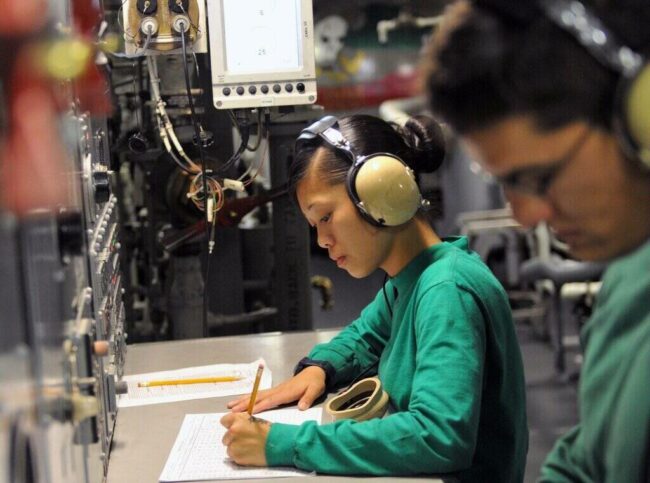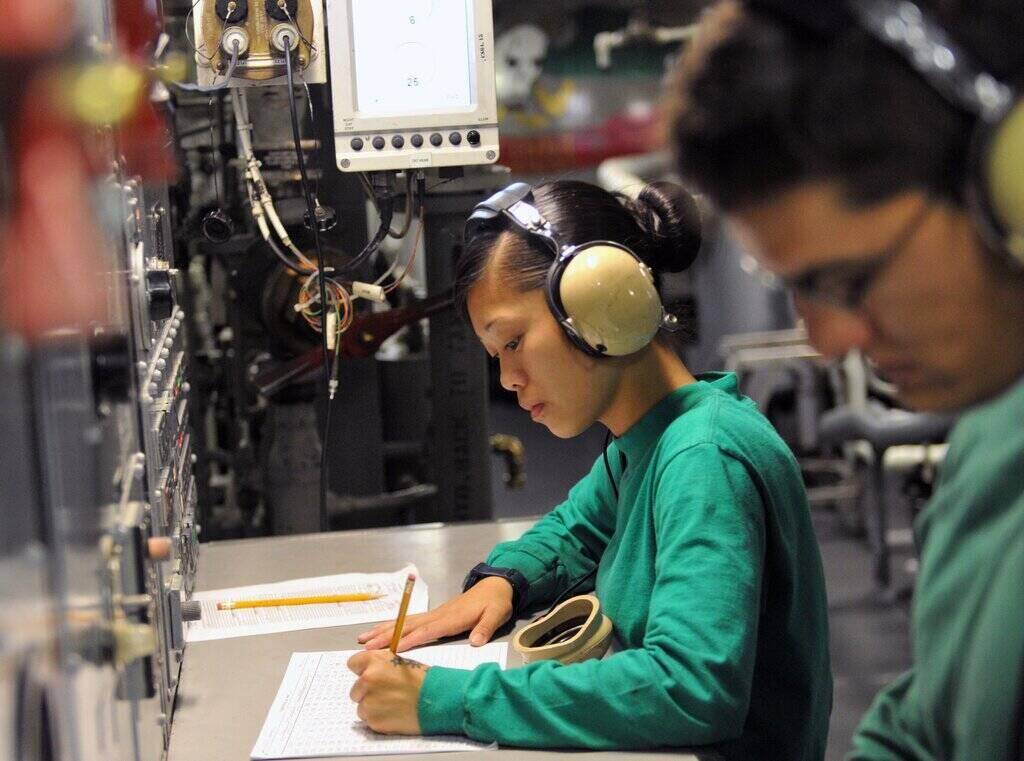|
Getting your Trinity Audio player ready...
|

Women are not relegated to primarily clerical or nursing duty as their predecessors were 80 years ago when the Navy Women’s Reserve Act was signed into law during WWII. President Franklin Roosevelt signed the Act establishing the Women Accepted for Volunteer Emergency Service program (WAVES) on July 30, 1942, to free male personnel for sea duty. Little did legislators know that the emergency Act, first used in WWI, would be the beginning of an integrated military.
Earlier that year, the Office of Naval Intelligence began recruiting female college students, despite conservative officers’ resistance. By August, the first female commissioned line officer was named the director of the newest division, Naval Reserve Lieutenant Commander Mildred McFee.

She graduated with a Master of Arts degree in 1928 and became the President of Wellesley College in 1936.
The lieutenant took a leave of absence from her position as President of Wellesley College to join the Navy Reserve. McFee immediately took on the task demanding task of overseeing the newly-established WAVES. She was promoted to captain in 1943, after new legislation passed in Congress.
McFee managed the WAVES during her tenure and saw the Women’s Naval Reserve grow to more than 100,000. “She continued on active duty until 1946, when she returned to the Presidency of Wellesley College,” according to America’s Navy.

Seventy-one years later, the Navy promoted its first female four-star admiral in the history of Naval Operations. Michelle J. Howard was awarded the promotion in 2014. She commanded the United States Naval Forces of Europe and Africa until she retired in 2017, after nearly 36 years of service.
Howard graduated from the U.S. Naval Academy in 1982 and earned a Master’s in Military Arts in 1998. By 1999, she became the first Black woman to command a ship, the U.S.S. Rushmore.
“She commanded amphibious squadrons, strike groups, and task forces as well as served in Operation Desert Shield and Desert Storm,” according to People.

In the year of the Navy WAVES 80th anniversary, “Sonar Technician (Surface) 1st Class Kate Haynes became the second woman in Naval history to qualify as an Acoustic Intelligence (ACINT) Specialist. Her job includes contributing her expertise to the antisubmarine warfare operations team. Haynes will also serve as a mentor for women in historically male-dominated fields.
The Navy recruiting materials tell readers that every job, space, and rank is open to women. “Whether your dream is to become a submariner, a SEAL operative, or our next fleet Admiral, the Navy will do everything in its power to help you achieve your personal goals,” it vows.
Nearly 70,000 women were serving in the United States Naval Command in 2020. Of these active duty sailors,11,000 were officers.
Written by Cathy Milne
Sources:
Library of Congress: Birthday of the WAVES
Center of Military History: The Women’s Army Corps: A Commemoration of World War II Service
U.S. Department of Defense: Remembering the WAVES During Women’s History Month; by Donna Cipolloni
World War II Database: WAVES: Women in the WW2 US Navy
America’s Navy: Office Of Naval Intelligence Sailor Becomes Second Female Acoustic Intelligence Specialist In Navy History
Featured and Top Image by Mass Communication Specialist 3rd Class Leonard Adams Jr for the U.S. Navy Courtesy of DVIDS – Public Domain License
First Inset Image by U.S. Navy Courtesy of Wikimedia – Public Domain License
Second Inset Image by Office of Civil Rights/US National Archives Courtesy of DVIDS – Public Domain License
Third Inset Image by America’s Navy Courtesy of the U.S. Department of Defense- Public Domain License



